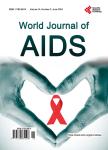Sexual Risk Behaviours among People Living with HIV and Implications for Control in the North West Region of Cameroon
Sexual Risk Behaviours among People Living with HIV and Implications for Control in the North West Region of Cameroon作者机构:Department of Medical Laboratory Sciences Faculty of Health Sciences University of Buea Buea Cameroon Department of Microbiology and Parasitology Faculty of Science University of Buea Buea Cameroon Department of Public Health and Hygiene University of Buea Buea Cameroon Regional Hospital Buea Buea Cameroon
出 版 物:《World Journal of AIDS》 (艾滋病(英文))
年 卷 期:2014年第4卷第2期
页 面:198-205页
学科分类:1002[医学-临床医学] 100214[医学-肿瘤学] 10[医学]
主 题:HIV/AIDS STDs Risk Factors HIV Control North West Region Cameroon
摘 要:In Cameroon, despite extensive control efforts against HIV/AIDS, the number of new HIV infections is still on the rise. The factors contributing to this are not clearly understood. We hypothesized that it may lie on people living with HIV (PLHIV). In a case-control descriptive study, we studied the characteristics and sexual risky behaviour of PLHIV in the North West Region of Cameroon which has the highest HIV prevalence. Participants were screened for HIV and a structured questionnaire was used in data collection. An equivalent number (350) of PLHIV and controls who did not differ with respect to age and sex participated. Relative to the control, PLHIV were generally less educated (P 0.001), poorer and less privileged (P 0.001) with no stable source of income. Among participants that were once married, a greater proportion of PLHIV were divorced (OR = 5.23, P = 0.007), and widows (OR = 2.73, P = 0.001). Among participants that were single, a relatively greater proportion of PLHIV practiced multi-partner sex (OR = 4.55, P 0.001). History of STDs was higher in PLHIV than the control (OR = 1.88, P = 0.001). Out of 350 PLHIV, 280 (80%) admitted to having had sexual intercourse after being diagnosed of which only 127 (41.78%) admitted to using condoms and 132 (47.14%) admitted to concealing their HIV status from their sexual partner(s). These findings have implications in HIV control programs which should target the poor and the less educated, as well as the sexual behaviour of PLHIV, so as to reverse the current rising trend of new infections in the country.



